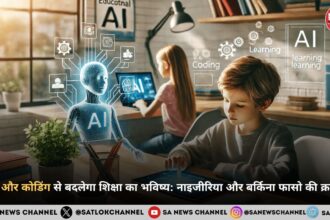In today’s world, automation has rapidly taken over almost everything. From ChatGPT to hundreds of other chatbots and LLMs with very niche and specific applications. Even hands-on fields like agriculture and construction are not immune to this wave of automation. Most of it is for the good of humanity, but is it reshaping our world for the better or for the worse?
- A.I. and Its Brief History
- Real world applications of A.I
- Healthcare:
- 1. MIRAI (MIT Jameel Clinic) – Early breast cancer risk prediction
- 2. AsymMirai (adapted from Mirai) – Interpretable breast cancer risk model
- 3. Tempus – Precision oncology
- Education:
- 1. Khan Academy – Khanmigo
- 2. Duolingo – Birdbrain & “Duolingo Max” (GPT‑4‑powered)
- 3. Squirrel AI (China) – Intelligent Adaptive Learning System (IALS)
- Transportation:
- 1. Waymo – “Waymo Driver”
- 2. Tesla – “Autopilot” & “Full Self‑Driving (FSD)”
- 3. Uber Freight – “Michelangelo” & AI Routing Systems
- Agriculture:
- 1. John Deere – See & Spray (by Blue River Technology)
- 2. FarmWise – Titan FT‑35
- 3. KissanAI (India) – Dhenu Agri-LLM
- Advantages of AI
- Limitations and Challenges of AI
- Future Outlook of AI
- Is A.I. your replacement?
- Conclusion
- Artificial Intelligence Connect with Satgyan
- FAQs: How Artificial Intelligence is Reshaping Our World
A.I. and Its Brief History
Artificial Intelligence (AI) refers to the simulation of human-like intelligence by machines—systems that can perceive, reason, learn, and make decisions. It branches into subsets like Machine Learning (ML), where algorithms improve from data without being explicitly programmed, and Deep Learning (DL), a further subset of ML that uses neural networks with many layers to model complex patterns.
In theory, AI aspires to replicate human-level or even superhuman cognition, but in practice, today’s AI is mostly narrow—designed to perform specific tasks like image recognition or language translation. The “intelligence” we see in tools like chatbots or recommendation engines is not true understanding, but highly refined predictive modeling, often described as “autocomplete on steroids,” trained to generate likely sequences of words based on vast datasets.
However, despite its impressive performance, it lacks consciousness, self-awareness, and reasoning.
The journey of AI began in the 1950s, rooted in Alan Turing’s ideas about machine intelligence and the famous Turing Test. The first practical model, the perceptron, introduced by Frank Rosenblatt in 1958, laid the foundation for neural networks by simulating how neurons might process data. AI saw early progress in rule-based expert systems during the 1970s and ’1980s but struggled with limitations in adaptability and data handling.
A turning point came in 2012 with AlexNet, a deep convolutional neural network that revolutionized image recognition and reignited interest in deep learning. Since then, rapid advancements in computing power, data availability, and algorithmic innovation have led to the development of powerful generative models like GPT, DALL·E, and Sora.
Yet, these systems are still narrow in scope and far from achieving Artificial General Intelligence (AGI), let alone Superintelligence. Their evolution reflects a shift from symbolic reasoning to statistical pattern recognition, marking a dramatic yet still incomplete journey toward true machine intelligence.
Real world applications of A.I
As aforementioned, A.I. is everywhere, healthcare, education, business and marketing, transportation, agriculture, entertainment and media, law and policing. This is a testament to its adaptability and the rapid advancements in computational capabilities. In healthcare, AI aids in diagnostics, personalized treatment, and drug discovery. In education, it powers adaptive learning platforms and virtual tutors.
Businesses use AI for customer service, predictive analytics, and process automation. In transportation, AI drives autonomous vehicles and optimizes logistics. Agriculture benefits through precision farming and crop monitoring.
Entertainment and media leverage AI for content recommendation and even content creation, while law enforcement uses AI for surveillance, predictive policing, and legal research. This widespread integration demonstrates how AI is reshaping the foundational operations of nearly every sector, though it also raises ethical, privacy, and accountability concerns that must be carefully addressed.
Healthcare:
As AI is able to recognise patterns incomprehensible to the naked eye, it can detect diseases
1. MIRAI (MIT Jameel Clinic) – Early breast cancer risk prediction
Model name: Mirai
Usage: This deep-learning model processes routine mammograms (along with optional clinical data) to estimate a woman’s personalized 1–5-year breast cancer risk. It’s validated globally across 48 hospitals and 22 countries on over 2 million images—outperforming standard clinical risk tools like Tyrer–Cuzick across diverse populations.
2. AsymMirai (adapted from Mirai) – Interpretable breast cancer risk model
Model name: AsymMirai
Usage: A simplified, interpretable variant built on Mirai’s feature extractor, which highlights bilateral asymmetry between the left and right breast as the signal. It achieves nearly Mirai-level accuracy (AUC drop ~0.05), making AI-based predictions transparent and clinically actionable.
3. Tempus – Precision oncology
Model name: Tempus AI platform
Usage: Uses AI and large molecular + clinical datasets (genomics, lab results, EHR notes) to deliver precision medicine services—especially in oncology (also cardiology, radiology, depression). Its platform helps oncologists tailor treatment plans, match patients to clinical trials, and accelerate personalized care.
Education:
1. Khan Academy – Khanmigo
Model name: Khanmigo (powered by GPT‑4)
Usage: Functions as both a virtual tutor for students and an assistant for teachers. Students receive guided, Socratic-style assistance in subjects like math, science, humanities, and even essay writing, while teachers can get customized lesson prompts, writing analysis, and real-time classroom insights.
2. Duolingo – Birdbrain & “Duolingo Max” (GPT‑4‑powered)
Model names:
Birdbrain: Duolingo’s proprietary personalized learning engine
Duolingo Max: A premium tier enhanced with GPT‑4
Usage:
Birdbrain personalizes the difficulty and timing of exercises based on each learner’s performance using neural-network prediction models .
Duolingo Max introduces two AI-driven features via GPT‑4: “Explain My Answer” (detailed feedback) and “Roleplay” (interactive conversational practice) .
3. Squirrel AI (China) – Intelligent Adaptive Learning System (IALS)
Model name: Intelligent Adaptive Learning System (IALS)
Usage: Uses AI to map student knowledge across thousands of micro-concepts. It dynamically personalizes lessons, assessments, and practice to address individual learning gaps, adjusting teaching sequences and content pacing.
Transportation:
1. Waymo – “Waymo Driver”
Model name: Waymo Driver (self-driving AI system) EMMA
How it’s used: Powers Waymo’s fully autonomous robotaxi fleet across Phoenix, San Francisco, Los Angeles, Austin, and Miami. The AI integrates camera, LiDAR, radar, and mapping data to navigate in complex urban environments without human drivers.
2. Tesla – “Autopilot” & “Full Self‑Driving (FSD)”
Model name: Autopilot / Full Self‑Driving (FSD), trained usingTesla’s Dojo supercomputer
How it’s used: Enables semi-autonomous driving features like lane keeping, adaptive cruise control, automatic lane changes, and parking. Trained on millions of real-world driving hours with Dojo enhancing video-based model accuracy
3. Uber Freight – “Michelangelo” & AI Routing Systems
Model names: Michelangelo ML platform; proprietary AI algorithms for dynamic routing and real-time pricing optimization
How it’s used:
Michelangelo is Uber’s internal ML platform that supports AI across their business—from demand forecasting to fraud detection.
Their freight division uses AI to optimize truck route planning, reduce empty miles, and set dynamic rates based on traffic, weather, and demand.
Agriculture:
1. John Deere – See & Spray (by Blue River Technology)
Model name: See & Spray
Usage: A cutting-edge system that uses computer vision and machine learning to distinguish weeds from crops in real-time. With 30+ cameras mounted on 40-ft boom rigs, it targets herbicide only at weeds—achieving up to a 90% reduction in chemical use—while operating on Nvidia Jetson-equipped tractors.
2. FarmWise – Titan FT‑35
Model name: Titan FT‑35 (Weeding Robot)
Usage: A robotic weeder that autonomously traverses vegetable fields using AI-powered computer vision to identify and remove weeds mechanically—no herbicides involved. Trained on millions of crop images, it operates with weekly software updates to adapt to new crops.
3. KissanAI (India) – Dhenu Agri-LLM
Model name: Dhenu LLMs (Dhenu 1.0 and Dhenu 2.0)
Usage: A voice-based generative AI assistant tailored for Indian farmers, answering queries in English, Hindi, and Hinglish on climate, soil, pests, irrigation, etc. The system, built on OpenHermes with Mistral 7B, supports regional language communication and field advisories.
Additional Applications of AI
Artificial Intelligence is rapidly transforming industries beyond healthcare and education, including business, entertainment, law, art, and construction. In business and marketing, AI tools like Salesforce Einstein and Adobe Sensei personalize customer interactions, automate campaigns, and boost sales through predictive analytics.
The entertainment and media sector leverages AI for content curation and creation—Netflix’s recommendation engine and generative models like DALL·E and Sora enhance user experiences and visual storytelling. In art, platforms like Midjourney and Runway ML enable creators to produce original images, music, and videos with minimal effort.
Law enforcement uses AI-powered tools like PredPol and Clearview AI for surveillance and crime prediction, while legal firms adopt AI like Harvey and CoCounsel to streamline research and drafting. In construction, AI platforms such as Buildots use computer vision to track progress and flag delays by comparing real-time site footage against digital construction models.
These innovations are reshaping how industries operate, bringing greater efficiency while raising important ethical and regulatory questions.
Advantages of AI
Artificial Intelligence offers a wide range of advantages that are transforming how we live and work. In healthcare, AI is saving lives by enabling early disease detection through tools like IBM Watson and AI-driven radiology scans, which can identify cancer or cardiac risks faster and more accurately than traditional methods.
In daily life and industry, AI saves time by automating repetitive tasks—whether it’s virtual assistants scheduling appointments, chatbots handling customer queries or smart algorithms sorting through massive datasets in seconds. Businesses benefit financially as AI reduces operational costs through process automation, predictive maintenance, and smarter inventory management.
From personalized learning in education to route optimization in logistics, AI improves quality of life by making systems more efficient and responsive. It also simplifies complex tasks—like content creation, coding, or language translation—making once time-consuming work accessible to more people.
By combining speed, intelligence, and adaptability, AI is not just a tool of convenience—it serves as a catalyst for smarter, safer, and more efficient living.
Limitations and Challenges of AI
Despite its impressive capabilities, AI remains far from achieving artificial general intelligence (AGI)—the kind of flexible, human-like reasoning it’s often associated with. Current AI models, including the most advanced, are fundamentally pattern-recognition systems that generate responses based on probabilities rather than true understanding or logic.
They lack consciousness, context awareness, and common sense, often producing confident but incorrect outputs in unfamiliar situations. Another major limitation is that many models have reached a plateau in performance under current training algorithms; further breakthroughs often depend on scaling up—requiring exponentially larger datasets, computational power, and energy, which raises sustainability concerns.
Additionally, AI presents a significant challenge to job markets, particularly in industries like manufacturing, customer support, and even content creation, where automation can replace human labor. This shift could potentially lead to economic disruptions and exacerbating income inequality. As AI continues to evolve, it is essential to recognize that its growth comes with technical, ethical, and societal trade-offs that demand thoughtful regulation and long-term planning.
Future Outlook of AI
The future of AI promises both innovation and challenges. Emerging trends like generative AI, potentially advancing beyond models like GPT-4, and integration with quantum computing could revolutionize fields like drug discovery and climate modeling.
AI’s potential to address global issues, such as optimizing renewable energy systems or predicting climate patterns, is immense. However, the absence of global regulations poses risks, as unchecked AI development could exacerbate ethical dilemmas, privacy intrusions, and socio-economic divides. Establishing robust governance frameworks will be crucial to ensure AI evolves responsibly, balancing innovation with accountability to maximize its positive impact on society.
Is A.I. your replacement?
AI is not your replacement—it is a tool, much like the printing press, the steam engine, or the internet. Every major technological advancement in history has disrupted existing jobs but also created entirely new and often better ones.
For example, the rise of computers eliminated many clerical roles but gave birth to entire industries like software development, cybersecurity, and digital marketing. Similarly, AI does pose a real threat to certain jobs—customer support, data entry, content moderation, and even some creative roles are increasingly being automated. However, this shift also opens up opportunities in AI development, prompt engineering, ethics oversight, and human-AI collaboration roles that never existed before.
The transition may be uncomfortable, but it’s not a zero-sum game. Like all powerful tools, AI presents both opportunities and risks — its impact depends on how we use it. When directed responsibly, it becomes a net positive for society, enhancing productivity, creating value, and freeing humans for more meaningful, creative, and strategic work.
Conclusion
Artificial Intelligence is undeniably reshaping our world—transforming industries, redefining efficiency, and unlocking new possibilities across sectors from healthcare and education to law, art, and agriculture.
Its ability to save lives, time, and money, while simplifying complex tasks and improving quality of life, positions it as one of the most transformative technologies of our era. However, AI is not without its limitations. It lacks true reasoning, risks amplifying biases, threatens employment, and demands vast computational, energy, and human resources for continued progress.
As we stand at this technological crossroads, the challenge lies not in resisting AI, but in guiding its development with foresight, ethics, and responsibility. With the right balance of innovation and regulation, AI can be harnessed not just to automate—but to elevate—human potential.
Artificial Intelligence Connect with Satgyan
The article “How Artificial Intelligence is Reshaping Our World” aligns deeply with Sant Rampal Ji Maharaj’s Satgyan, which teaches that humanity has always been in search of comfort, peace, and a better life—an effort rooted in our soul’s longing for the eternal bliss we once experienced in Satlok. From the invention of the wheel to today’s advanced AI technologies, our innovations reflect this inner drive to simplify life and reclaim a sense of fulfillment.
Satgyan explains that this pursuit is not merely physical but spiritual—our soul’s attempt to reconnect with the love and completeness we lost after leaving Satlok. While AI contributes to human welfare by improving healthcare, education, and various sectors, as seen in models like MIRAI and Khanmigo, it also brings ethical and social challenges. Sant Rampal Ji Maharaj, through Gyan Ganga and his spiritual discourses, emphasizes that true peace and well-being cannot be achieved through material progress alone.
He advocates for devotion, moral living, and detachment from vices like addiction and greed, offering a higher path beyond the temporary solutions of technology. Thus, both AI and Satgyan strive to enhance human life—one through external innovation, and the other through inner transformation.
FAQs: How Artificial Intelligence is Reshaping Our World
- Question: What is Artificial Intelligence (AI)?
Answer: AI is a technology that mimics human-like intelligence by training on vast data to recognize patterns and predict responses, primarily through statistical analysis. - Question: What are the main application areas of AI?
Answer: AI is used in healthcare (e.g., MIRAI), education (e.g., Khanmigo), agriculture, transportation, business, entertainment, and law enforcement. - Question: How does AI help in healthcare?
Answer: AI aids in early disease detection (e.g., MIRAI for breast cancer risk) and creates personalized treatment plans (e.g., Tempus platform). - Question: What are the advantages and limitations of AI?
Answer: Advantages: Efficiency, personalization, and automation. Limitations: Ethical concerns, privacy issues, and lack of true intelligence. - Question: How does AI contribute to education?
Answer: AI personalizes learning, like Khanmigo and Duolingo Max, adapting lessons and exercises to individual student needs.









